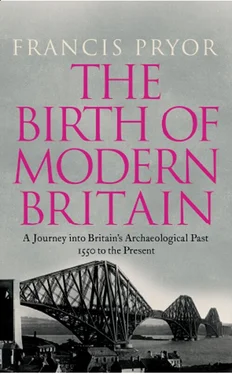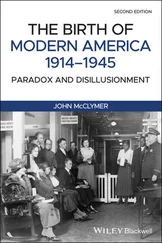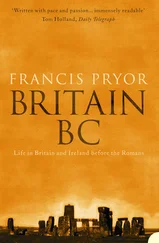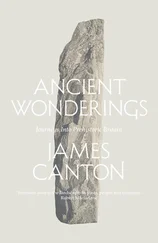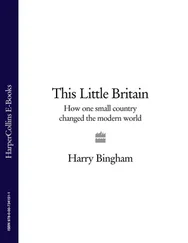I have always had an interest in what one might term modern archaeology and found I had more time for it after I had completed work on the report of my excavations at Flag Fen, a process that occupied me, night and day, for some five years in the mid-1990s. When that was finished I decided I really had to get out more, see the world and ‘get a life’. But I still had a deep and abiding interest in the past and the story behind the creation of modern Britain. So I found my attention was gradually shifting forwards in time. I was, however, completely astonished by the sheer diversity I encountered when I delved more deeply into the archaeology of modern times. It wasn’t just about the obvious themes: the growth of industry or agriculture and the development of towns. I also found that students and researchers were approaching even these topics from unexpected directions, often with surprising results. This was one of the other reasons I decided it was impossible to present a ‘balanced’ view of the archaeology of post-medieval times and have opted instead to examine projects and ideas that give one a new slant or perspective, if not a ‘sideways’ look at the period. Although there are a few excellent history books that cast their nets wider, 14 too often such accounts approach early modern Britain from the viewpoint of the great and the good. Theirs is a story of major politicians, generals, bishops, kings, queens and princes. Mine, I hope, will be about everyone else.
Finally, I must say a few words about the way this book has been organised. Readers of the three other volumes of this four-part archaeological history of Britain will have grown used to a straightforward chronological layout. In fact, I’ll be quite honest and admit that, for the sake of consistency, I tried to organise this book in the same way. But sadly it just didn’t work. I found I was attempting an impossibly difficult juggling act with too many balls in the air at one time. Put another way, too much was happening too quickly across too many different areas of life to sustain a coherent narrative, especially when I switched themes, at which point, like a bad television documentary, I was forced to summarise or recapitulate ‘the story so far’. Anyhow, after a few weeks I abandoned the unequal struggle and decided instead to follow a series of general themes, chapter by chapter. These topics will, however, be approached chronologically. Of course an author is never a good judge of such things, but, fingers crossed, I think it works rather better than I once dared to hope.
* I use the terms Scheduled (for ancient sites) and Listed (for standing buildings) to denote that these places are protected by Act of Parliament.
Chapter One
Market Forces: Fields, Farming and the Rural Economy
SO FAR MY investigation of Britain’s archaeological past has taken me almost two millennia this side of prehistory, my own area of expertise. I am now deep within unknown territory, what medieval adventurers might have described as terra incognita . With this in mind I trust readers will forgive me if I follow an old excavator’s principle and work from the known to the unknown.
So I want to start our exploration of Britain in the post-medieval period in the farms and fields of the countryside. There, at least, I feel reasonably at home and not just because I was brought up in a small village, but because over the past thirty-odd years my wife Maisie and I have kept a small sheep farm which would regularly make a tiny profit, until, that is, 2001, when the market value of British livestock collapsed, rather like wheat prices after the Black Death. In our case the miscreants have been BSE/scrapie, foot-and-mouth (twice) and now the dreaded Bluetongue in all its grisly variants. More recently, and much to our surprise, things have picked up. This improvement followed directly on the bursting of the bankers’ bubble in 2008, when the collapse of cheap credit forced an international reassessment of what matters in life. At last people have recognised that the era of cheap food was always unsustainable. Anyhow, my interest in sheep-farming has given me insights into, and much sympathy for, historic and ancient farmers. So let’s start our journey where the food that nourishes human life originates: with farms, with farmers, and their families.
I would guess that over the years archaeologists have excavated hundreds, if not thousands, of prehistoric, Roman and medieval farms, farmyards and field systems. I myself have dug upwards of a dozen. But with one exception, which I will discuss shortly, I cannot think of a single post-medieval or modern farm that has been treated in this way. * This simple fact illustrates, if anything can, how different is the way that post-medieval archaeology is carried out. There are fewer excavations and instead far, far more effort goes into the accurate surveying of upstanding remains which are then painstakingly tied in with the documentary evidence. So that’s how things are done and to some extent it makes complete sense, because why dig when you can measure and survey at a fraction of the cost?
It is all perfectly rational, but nevertheless the digger/excavator deep down inside me feels a bit uneasy: surely without entirely new and unexpected information from the ground there is always a danger that observations derived from surveys can somehow be made to ‘fit’ the documentary evidence? True, these two strands of research can together combine to reveal fascinating stories, but, speaking entirely for myself, I sometimes enjoy seeing theories – even my own – being turned rudely upside down. The inevitable rethink that follows can be wonderfully invigorating and is far cheaper than a bottle of Champagne. That’s what makes the writing up of an excavation such fun: it becomes a prolonged process in which pennies drop with unexpected force, delight and frequency.
British archaeology has a distinguished history of long-term projects in which one or two slightly obsessive characters – and I’m happy to number myself among them – assemble a team of similarly slightly obsessive people who then work closely together, often lubricated with quantities of drink and coffee, to reveal the archaeological story of a particular place or region. In my various books on Britain’s archaeology I have had good reason to thank these people whose work I have ransacked for ideas. Often these long-term projects can produce fascinating tales that develop gradually over the years and become suffused with a life and vigour all of their own. One of the very best of them is about the archaeology of the small Somerset parish of Shapwick. We first visited this village on the edge of the marshy Somerset Levels in Britain in the Middle Ages . 1 As I explained there, one of the slightly obsessive characters behind the Shapwick project is my old friend Professor Mick Aston, better known to millions of viewers today as the grey-haired archaeologist in the stripy jumper on Time Team .
Although not religious himself, Mick will go to great lengths to help a church in difficulties and when, in the summer of 2007, I read in our local paper that the magnificent building in Long Sutton needed urgent repairs to its roof, I thought of Mick, and together we organised a public lecture, which was to launch the vicar’s appeal for funds. The church is rather extraordinary. Like many around the Wash, it is very large and appears on the outside to be quite late – maybe fourteenth century – but when you enter be prepared for a surprise, because the interior is almost completely Norman, and Norman of a very high order. Mick got wildly excited and was convinced that the superb workmanship around us was Cluniac (a monastic order famous for its first-rate buildings). This book isn’t about the Middle Ages (and I’ll get to the point in a moment), but Mick’s presence drew a huge crowd and the church was thronged with people. There were stalls selling local books and magazines, and the nearby village hall supplied a stream of people contentedly munching their way through vast Fenland cow pies. I was forcibly struck by the scene and realised that the church had suddenly become what it was in medieval times: the centre of a bustling community and not the exalted, pious and remote place that so many country churches have become since the liturgical reforms of Victorian times.
Читать дальше
